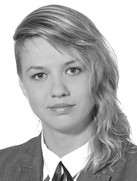Bioimpedance tests to rate women’s age-specific body composition variations
Фотографии:
ˑ:
PhD, Associate Professor E.O. Rybakova1
PhD, Associate Professor Т.N. Shutova2
I.M. Bodrov2
1Tchaikovsky State Institute of Physical Culture, Tchaikovsky
2Plekhanov Russian University of Economics, Moscow
The study analyzes the women’s age-specific body composition rating bioimpedance test data. The bio-impedance tests were designed to obtain a set of the body resistance rates versus the body anthropometrical characteristics to rate the absolute and relative body components and assess the bodily resource and potential exposure to a variety of diseases. The study was performed at the Federal Winter Sport Training Center (FWSTC) ‘Snezhinka’ named after A.A. Danilov. Subject to the study were 18-74 year-old women (n=159) split up into five age groups, with the age-specific body components rated by the InBody 720 Bio-impedance Test and Analyzer system.
The study data and analyses showed that 30+ year-old physically inactive women may lose up to 3-5% of the muscle mass and 5-9% of the body water mass and gain up to 6-10% in the fat mass every 10 years
Keywords: bioimpedance tests, body composition, women.
References
- Anishchenko A.P., Arkhangelskaya A.N., Stulina D.D. et al. Sopostavimost antropometricheskikh izmereniy i rezultatov bioimpedansnogo analiza [Comparability of anthropometric measurements and results of the bioimpedance analysis]. Mater. V mezhreg. nauch.-prakt. konf. s mezhdunar. uchastiem 'Innovatsionnyie tekhnologii v sporte i fizicheskom vospitanii' [Proc. V inter-reg. res.-practic. conf. with intern. participation 'Innovative technologies in sports and physical education']. 2016, pp. 37-41.
- Emelyanova E.Yu., Ismailov I.I., Petrov V.A. et al K zadache analiza sostava tela cheloveka [On human body composition analysis]. Mater. Vseros. konf. s mezhdunar. uchastiem 'Informatsionno-telekommunikatsionnye tekhnologii i matematicheskoe modelirovanie vysokotekhnologichnykh sistem' [Proc. nat. conf. with intern. participation 'Information-telecommunication technologies and mathematical modeling of high-tech systems'], 2017, pp. 268-270.
- Kozhedub M.S., Sevdalev S.V., Vrublevskiy E.P. Vozdeystvie fizkulturno-ozdorovitelnykh zanyatiy na komponentny sostav tela zhenschin srednego vozrasta [Effect of physical education and health classes on body composition of middle-aged women]. Nauka-2020, 2016, no.3 (9), pp. 46-53.
- Nikityuk D.B., Nikolenko V.N., Klochkova S.V. et al. Indeks massyi tela i drugie antropometricheskie pokazateli fizicheskogo statusa zhenschin s uchetom vozrasta i individualno-tipologicheskih osobennostey konstitutsii zhenschin [Body mass index and other anthropometrical characteristics of physical status of women in view of age and individual typological features of their constitution]. Voprosy pitaniya,2015, vol. 84, no. 4, pp 47-54.
- Nikolaev D.V., Smirnov A.V., Bobrinskaya I.G. Bioimpedansny analiz sostava tela cheloveka [Bioimpedance analysis of human body composition]. Moscow, 2009, 392 p.
- Rudnev S.G., Soboleva N.P., Sterlikov S.A. et al. Bioimpedansnoe issledovanie sostava tela naseleniya Rossii [Bioimpedance study of body composition in the Russian population]. Moscow: CRIOIH publ., 2014, 493 p.
- Shutova T.N., Rybakova E.O., Sharav'eva A.V. Korrektsiya fizicheskogo sostoyaniya zhenschin sredstvami akvafitnesa [Correction of Women's Physical Condition by Means of Aqua Fitness]. Teoriya i praktika fiz. kultury, 2015, no. 1, pp. 55-57.


